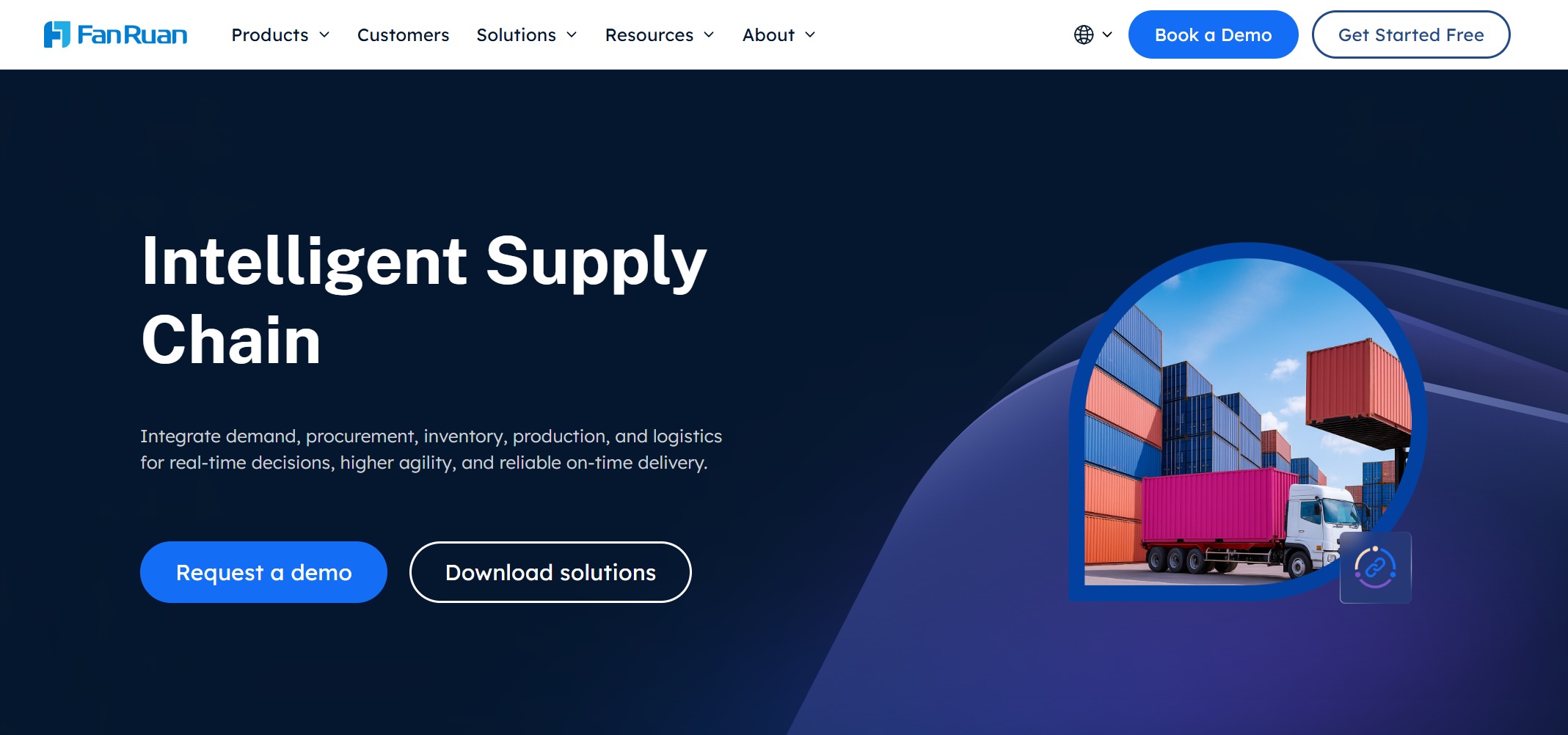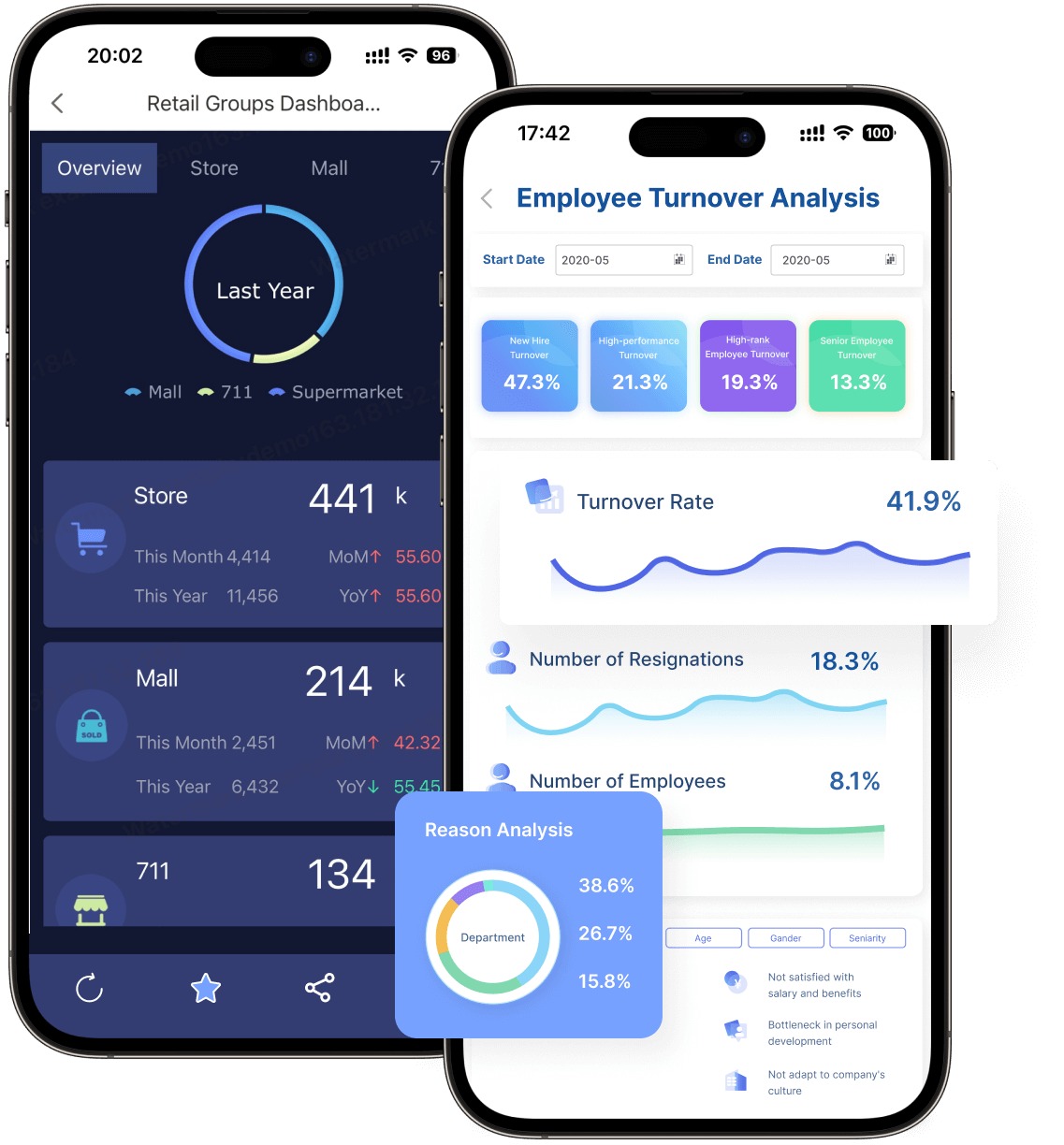Supply chain visibility tools are software platforms that collect, analyze, and display real-time data from across your supply chain to help you track goods, identify issues, and make faster, more informed decisions. You want supply chain visibility tools that keep your business ahead. Here are the top 10 for 2025:
- FineReport by FanRuan
- Project44
- FourKites
- Oracle SCM Cloud
- Kinaxis Maestro
- Infor Nexus
- GoComet
- Tradeverifyd
- SAP Integrated Business Planning
- Manhattan Active Supply Chain
The market is growing fast, with only 13% of companies achieving full visibility and 45% using AI for predictive analytics.
| Metric | Percentage |
|---|---|
| Companies with full supply chain visibility | 13% |
| Companies leveraging IoT for tracking | 60% |
| Manufacturers improving visibility | 45% |
| Businesses using AI for predictive analytics | 45% |
- 88% of customers expect real-time order tracking.
- Companies with real-time tracking report higher satisfaction rates.
Choose the right tool to improve your operational efficiency and respond quickly to disruptions.
What Are Supply Chain Visibility Tools?
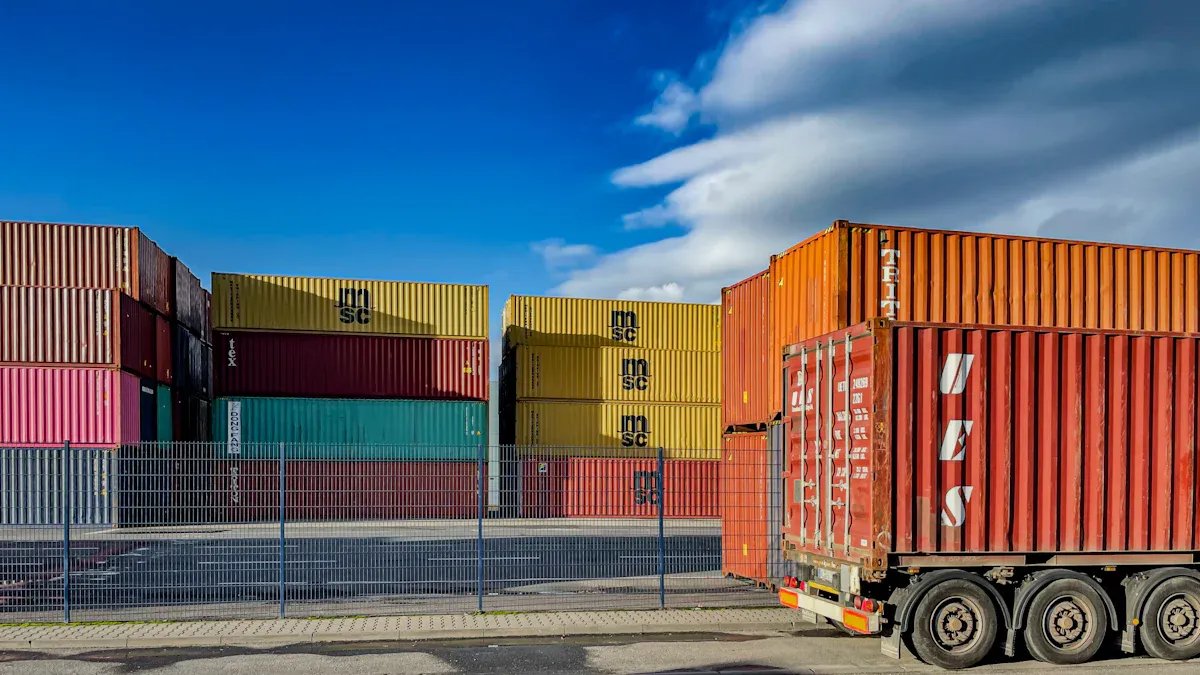
Definition and Core Functions
Supply chain visibility tools help you track, analyze, and manage every part of your supply chain. These tools gather data from many sources, such as ERP systems, suppliers, and IoT devices. You can use them to store and process information, spot trends, and share insights with your team. They also help you find inventory shortages, track goods in near real time, and make faster decisions. With these tools, you can reduce costs, manage risks, and meet regulations more easily.
Here is a table showing the core functions of these tools:
| Core Function | Description |
|---|---|
| Data Collection | Gathering data from internal and external sources, including ERP systems, supplier data, and IoT devices. |
| Data Storage and Analysis | Storing and processing data to uncover trends, manage risks, and evaluate performance. |
| Data Display and Sharing | Utilizing dashboards and reports for real-time insights into supply chain operations. |
| Spot Material and Inventory Shortages | Identifying weaknesses in inventory and planning to align with supplier lead times. |
| Track Goods in Near Real Time | Maintaining an up-to-date view of the product lifecycle for better decision-making. |
| Make Faster Decisions | Enabling informed resource allocation and optimization of operations. |
| Reduce Costs | Identifying cost-saving opportunities through visibility into the supply chain. |
| Manage Risk | Recognizing potential risks and responding quickly to mitigate them. |
| Efficiently Meet Regulatory Compliance | Ensuring compliance with regulations through collaborative tools and information sharing. |
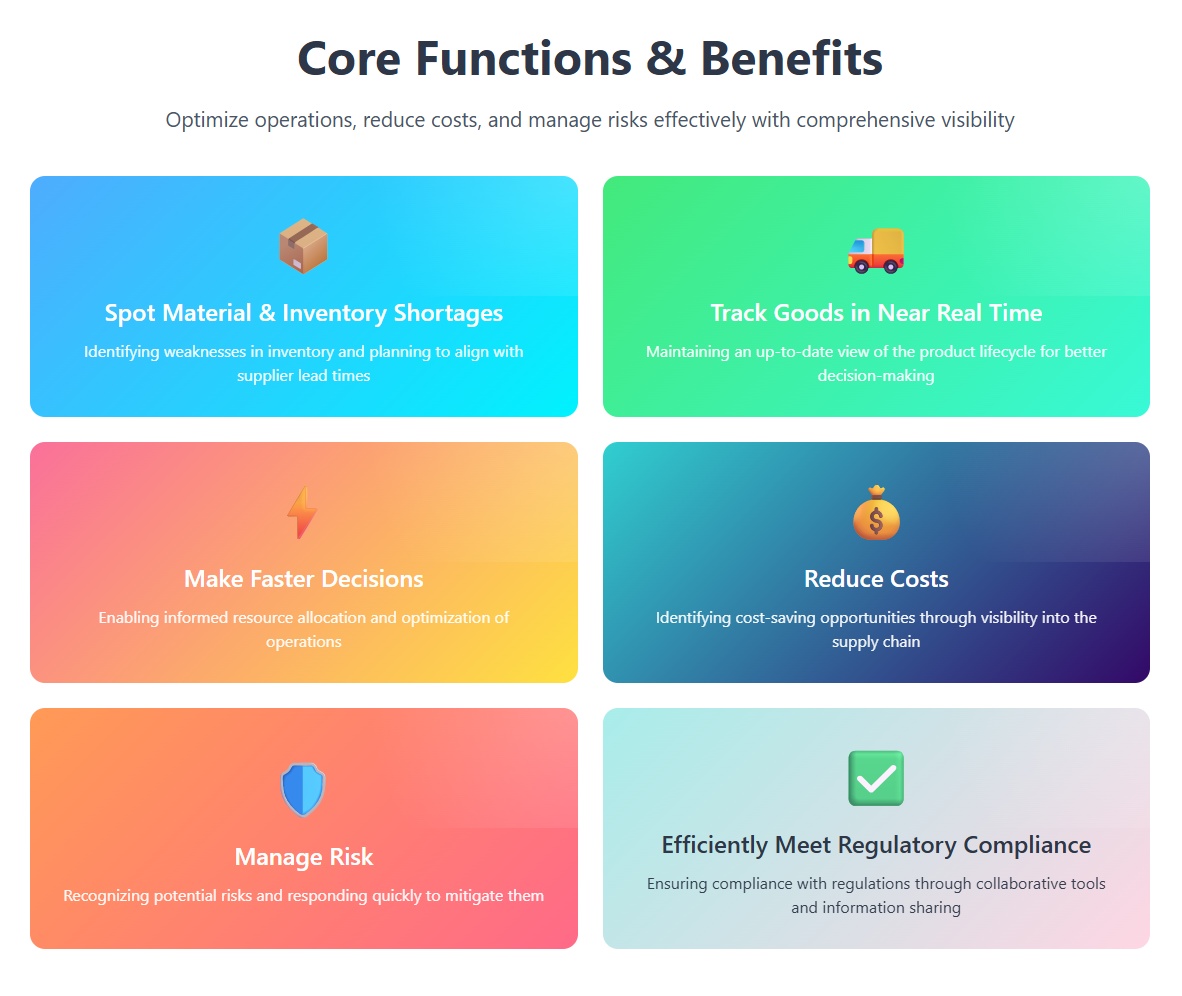
Importance in Modern Supply Chains
You need supply chain visibility tools to keep your business running smoothly. These tools connect each stage of your supply chain, from sourcing to delivery. They give you real-time data and insights, so you can spot risks early and act fast. When you work closely with suppliers, you solve problems quicker and improve performance. Data analytics let you predict disruptions and make smart choices to keep operations on track.
Note: Companies that lack these tools often struggle with data integration, outdated systems, and complex supply chains. They may also face high costs and problems with data accuracy.
| Challenge Type | Description |
|---|---|
| Data Integration | Companies struggle to harmonize data from various operations due to diverse formats and protocols. |
| Legacy Systems | Outdated systems hinder the connection with modern visibility tools, creating significant hurdles. |
| Cost Constraints | Financial investments for software, training, and hardware can strain budgets. |
| Complexity of Supply Chains | Global supply chains involve multiple tiers, making visibility a formidable task. |
| Data Accuracy | Accurate and timely data capture from various sources is essential for effective visibility. |
When you use these tools, you gain better control, manage risks, and build stronger relationships with suppliers. You also boost your brand reputation by being transparent, which customers value more than ever.
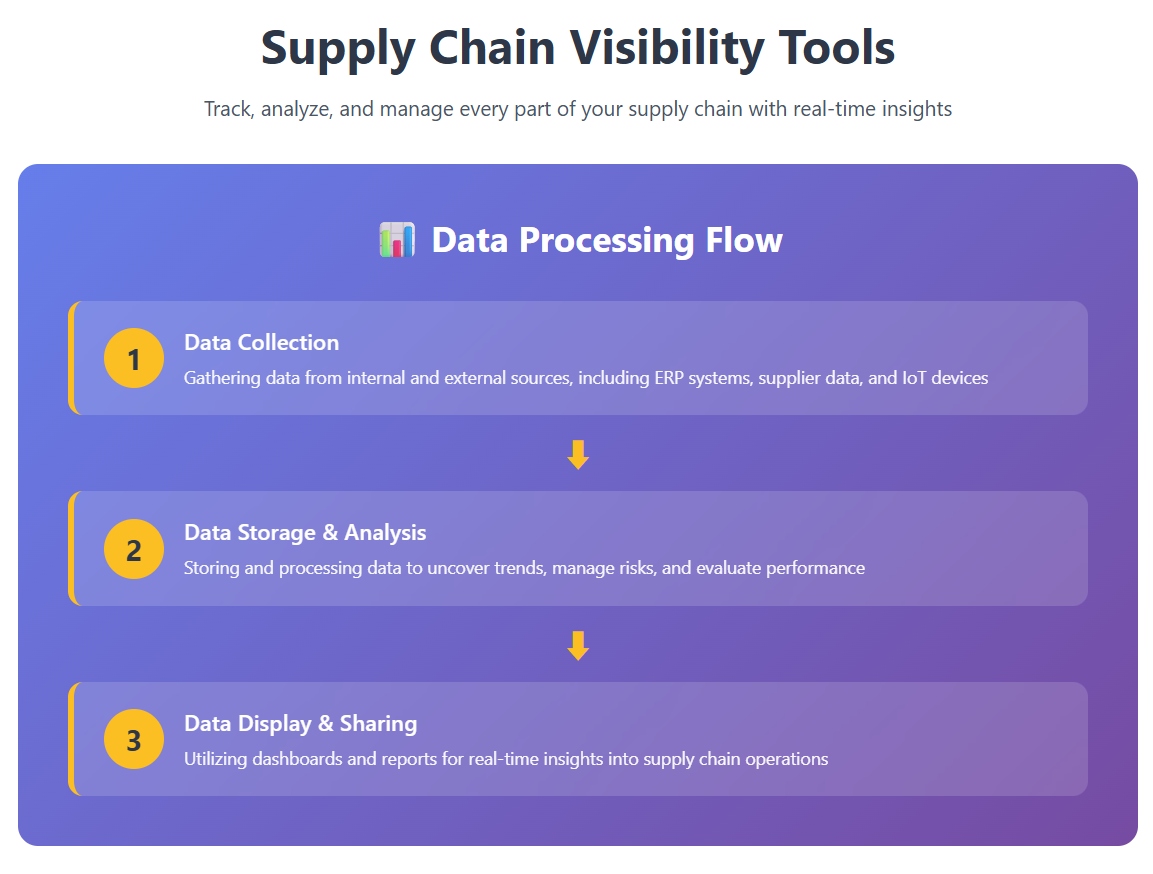
Top 10 Supply Chain Visibility Tools for 2025
Choosing the right supply chain visibility tools can transform your business. The following list highlights the top solutions for 2025, selected based on operational efficiency, real-time tracking, integration support, ease of use, actionable insights, cost reduction, supplier accountability, and customer experience improvement.
| Criteria | Description |
|---|---|
| Operational Efficiency | Features that enhance the overall efficiency of supply chain operations. |
| Real-Time Tracking Capabilities | Ability to track shipments and inventory in real-time. |
| Integration Support | Compatibility with existing systems and tools. |
| Ease of Use | User-friendly interfaces that facilitate quick adoption. |
| Actionable Insights | Capability to provide insights that can lead to informed decision-making. |
| Cost Reduction | Tools that help in minimizing operational costs. |
| Supplier Accountability | Features that enhance the accountability of suppliers. |
| Customer Experience Improvement | Tools that contribute to a better experience for customers. |
1.FineReport by FanRuan
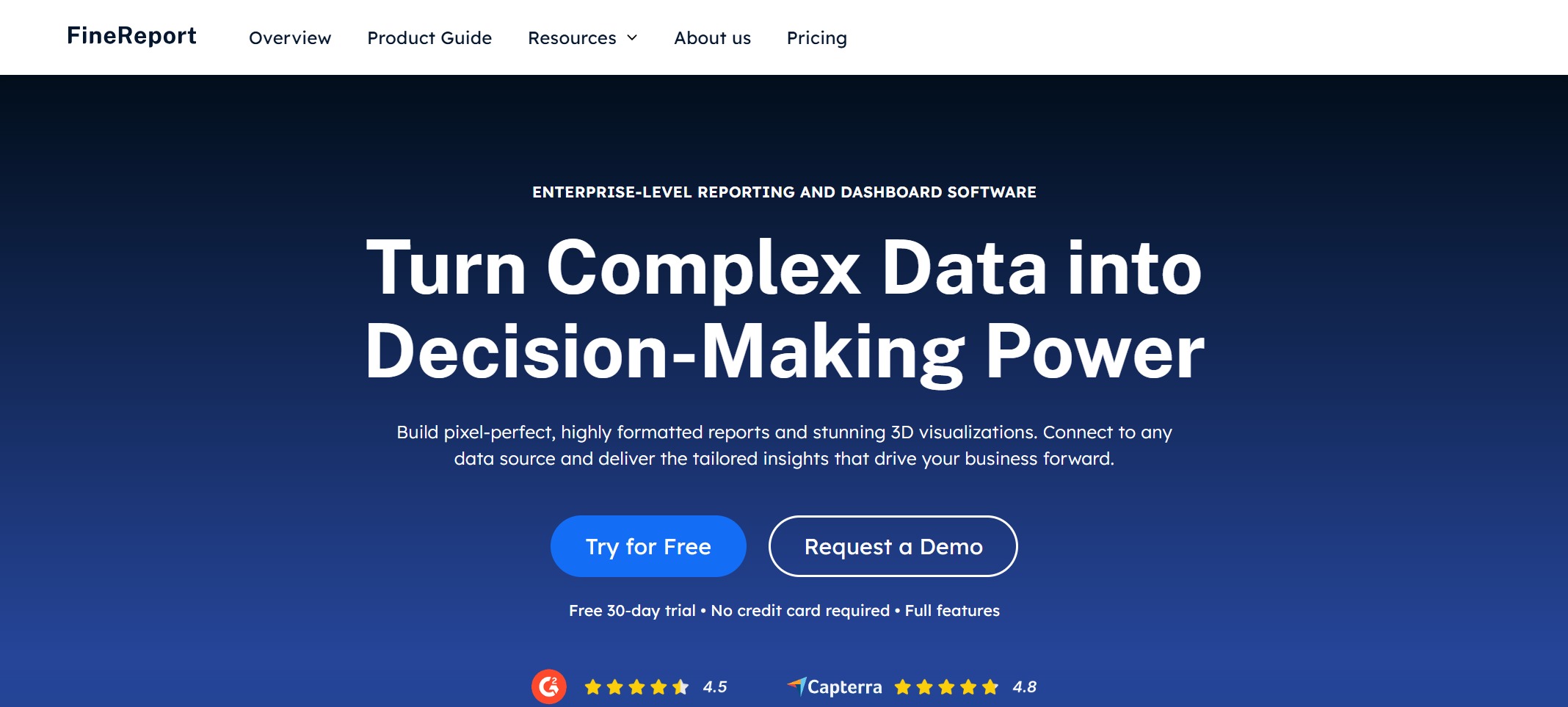
Website: https://www.fanruan.com/en/finereport
FineReport by FanRuan stands out as a supply chain visibility tool designed for large enterprises and government operations. You can use FineReport to integrate data from multiple sources, create custom reports, and visualize your entire supply chain in real time. The platform supports funnel analysis, communication management, and robust data import. FineReport helps you manage contracts, track sales documents, and improve operational communication. Its focus on efficiency and market share growth makes it ideal for organizations seeking to streamline operations and support strategic growth. Many large enterprises rely on FineReport for its strong analytics, security features, and ability to handle complex reporting needs.
Tip: FineReport’s collaborative tools and custom reporting capabilities help you drive efficiency and maintain data integrity across your supply chain.
2.Project44
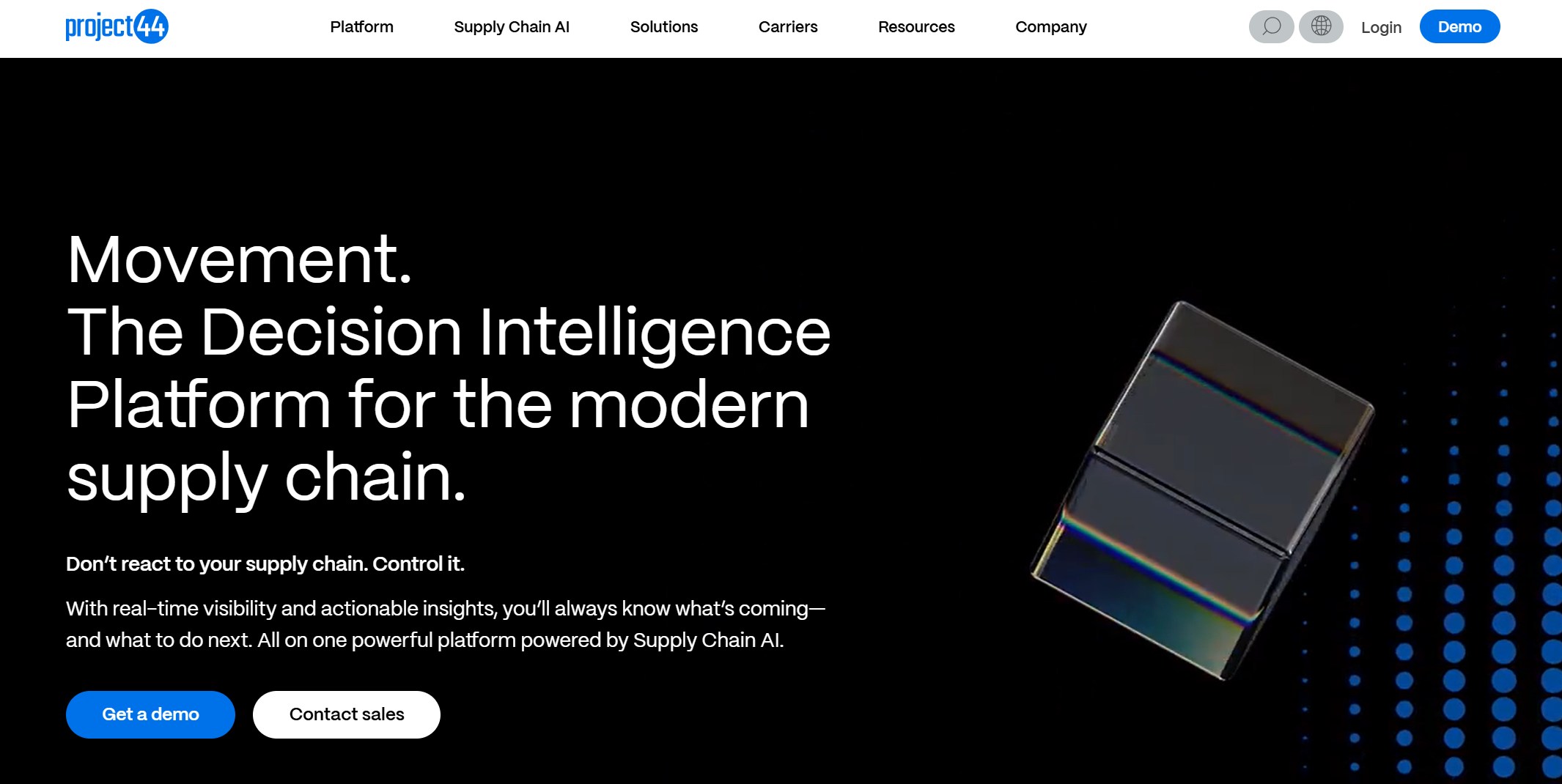
Website: https://www.project44.com/
Project44 is a leading ai supply chain visibility platform known for its extensive carrier network and real-time tracking capabilities. You can track shipments across multiple carriers and receive reliable estimated times of arrival. Project44 integrates seamlessly with other supply chain management systems, allowing you to convert purchase orders into shipments, manage documents, and automate settlements. The platform provides real-time data access, automated processes, and agility in pricing. Project44 is best for businesses that need to monitor shipments closely and require seamless integration with transportation and yard management systems.
| Strengths | Limitations |
|---|---|
| Extensive carrier network | SKU-Level Insights Unavailable |
| Real-time tracking capabilities | Lack of detailed SKU-level data |
| High user ratings (4.8/5 on G2) |
3.FourKites
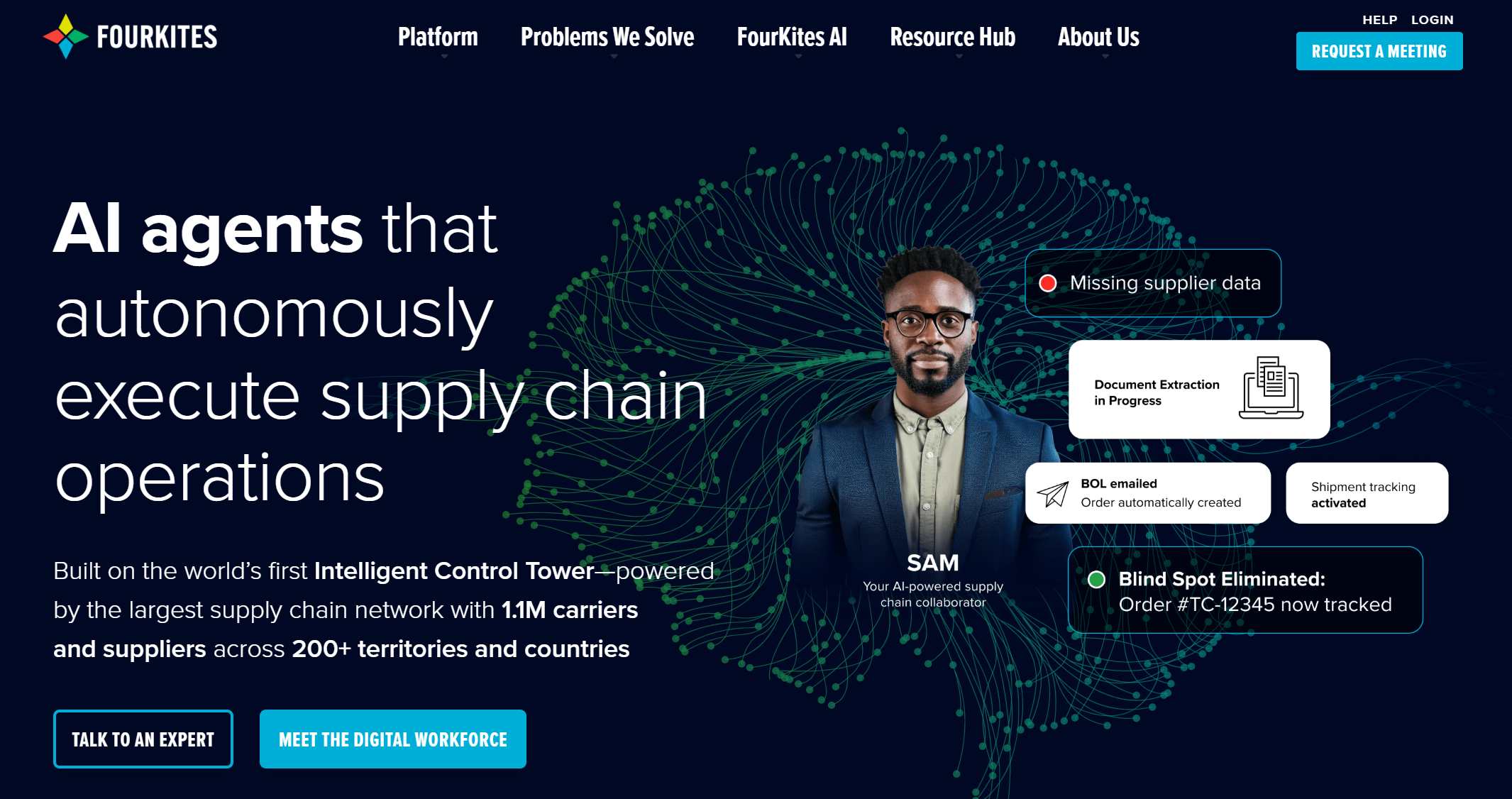
Website: https://www.fourkites.com/
FourKites delivers real-time visibility and proactive exception management for your supply chain. The platform sends alerts for dwell time, weather, traffic, and load status, helping you manage exceptions before they become problems. FourKites integrates with your TMS and WMS systems, providing a single source of truth through robust data aggregation. You can use FourKites to improve on-time delivery, manage budgets, and enhance customer service. Companies like Barilla, Land O’Lakes, and Kimberly-Clark have used FourKites to save time, reduce costs, and improve customer satisfaction. FourKites is ideal for organizations that want to optimize logistics and gain actionable insights from a system-agnostic platform.
4.Oracle SCM Cloud

Website: https://www.oracle.com/scm/
Oracle SCM Cloud offers a comprehensive suite for supply chain management, focusing on streamlined operations and enhanced collaboration. You gain real-time visibility into your entire supply chain network, which allows you to respond quickly to changes. The platform uses AI-powered applications to deliver predictive analytics and advanced insights, helping you make better decisions and forecast demand accurately. Oracle SCM Cloud is best suited for large enterprises that need centralized control, advanced analytics, and cost reduction through automation. The platform’s centralized view helps you identify areas for improvement and optimize performance across departments.
5.Kinaxis Maestro
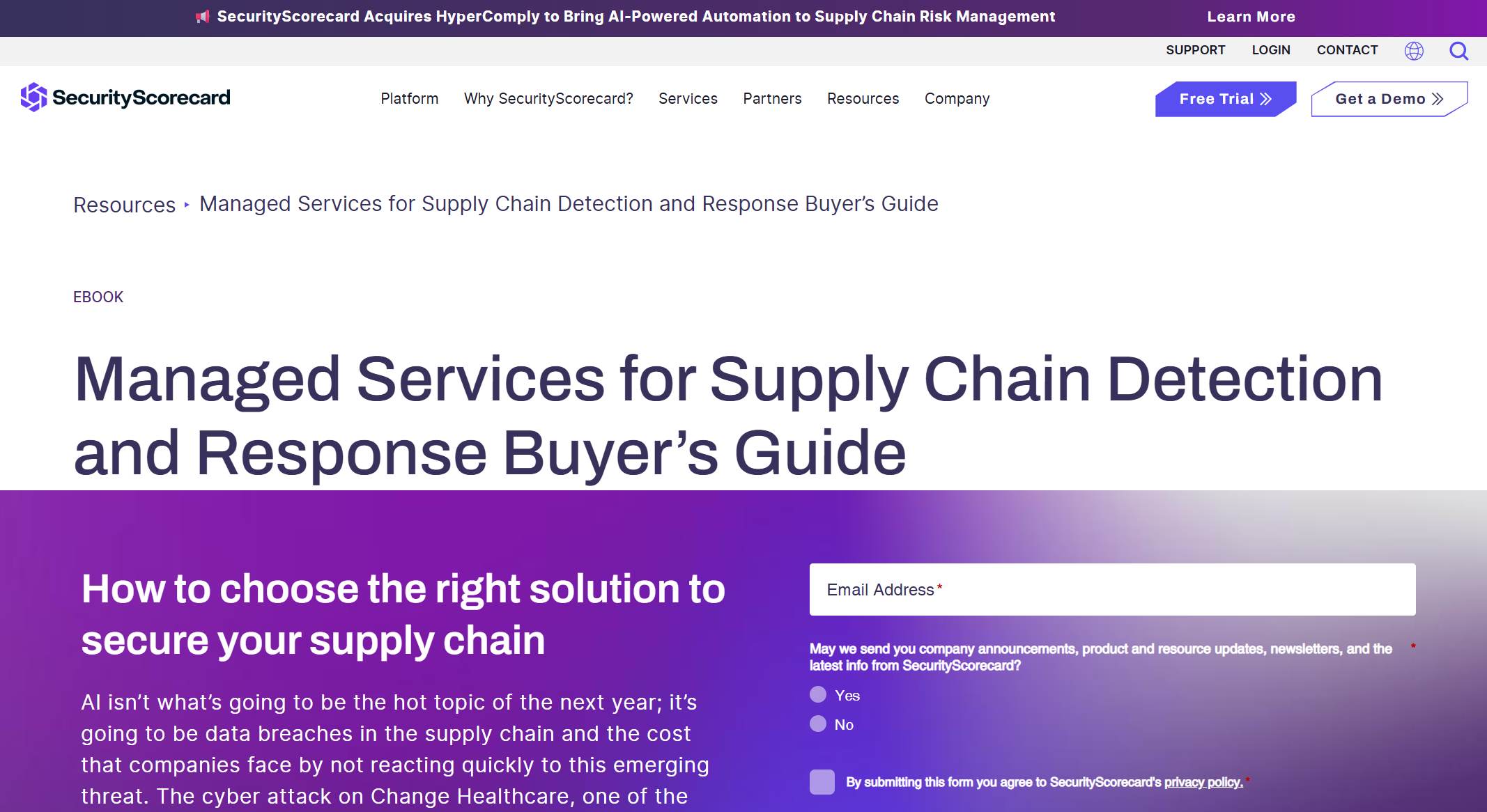
Website: https://www.kinaxis.com/en/solutions/platform
Kinaxis Maestro is an ai supply chain visibility solution that automates decision-making using internal and external data signals. You can create and run unlimited scenarios to assess the impact on your supply chain plans. The platform’s decision intelligence provides KPI-driven recommendations, while automation streamlines repetitive tasks. Kinaxis Maestro supports real-time scenario planning, allowing you to adapt quickly to disruptions and manage risks proactively. This tool is especially useful for industries like pharmaceuticals, where you need to optimize clinical trial supply, streamline new drug launches, and manage global supply chains.
“The ability to predict, test, and adapt in real time is what separates leaders from laggards.”
6.Infor Nexus
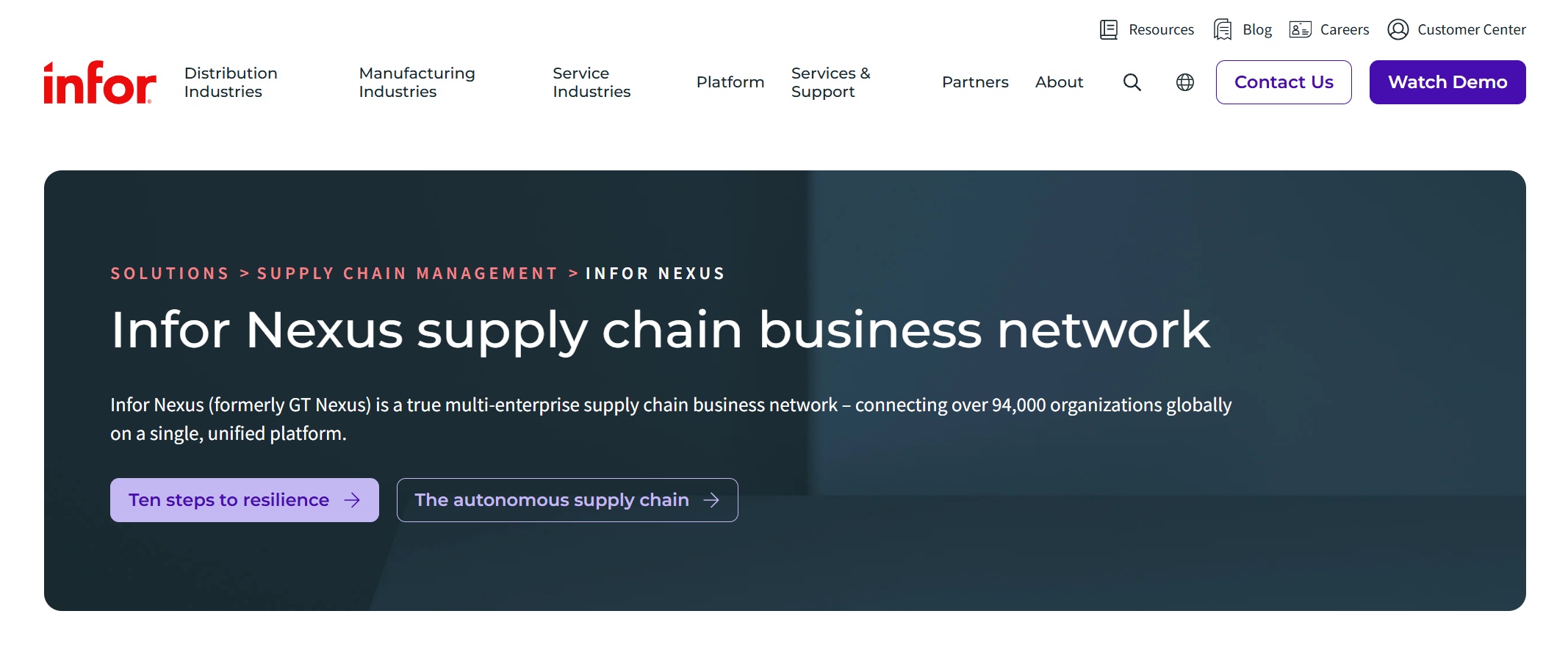
Website: https://www.infor.com/solutions/scm/infor-nexus
Infor Nexus connects your entire global supply chain network, offering end-to-end visibility of orders, shipments, and inventory. You can access real-time updates on container events and ETAs, collaborate with suppliers and logistics providers, and manage compliance and ESG requirements. The platform’s dashboards and reporting tools give you actionable insights to optimize performance. Infor Nexus is ideal for businesses that operate globally and need to coordinate with multiple partners, track shipments, and respond proactively to disruptions.
- End-to-end visibility of supply chain and inventory levels
- Real-time updates and predictive analytics
- Collaboration across a single global network
7.GoComet
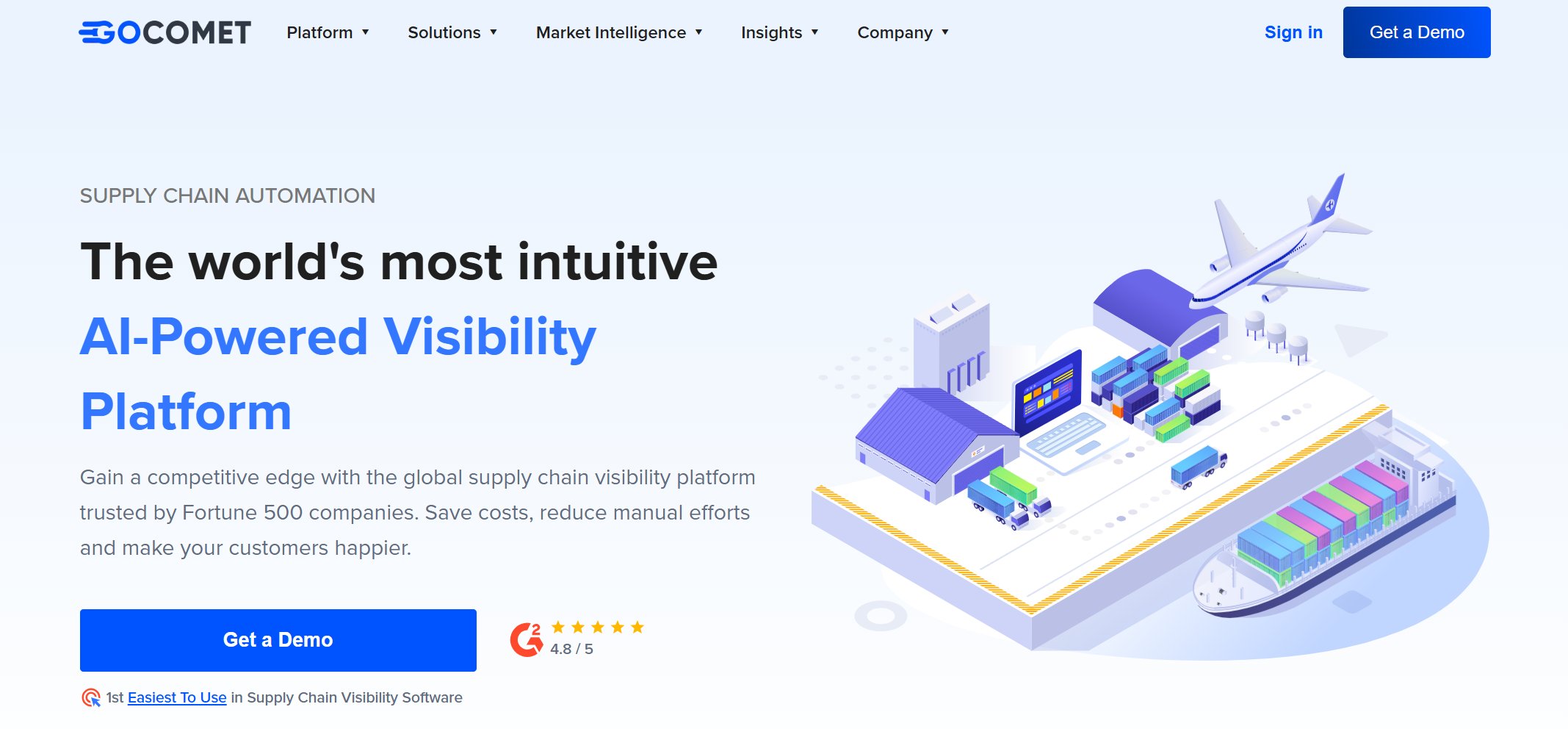
Website: https://www.gocomet.com/
GoComet specializes in logistics and shipment tracking, providing real-time visibility and automated tracking for your shipments. You can use GoComet’s centralized dashboard to monitor all tracking information, saving time and improving efficiency. The platform’s API integrations allow you to track multiple shipments from a single dashboard, and its analytics can boost your Delivery in Full and On Time (DIFOT) rates. GoComet is best for companies that want to enhance asset security, reduce manual processes, and improve delivery performance.
8.Tradeverifyd
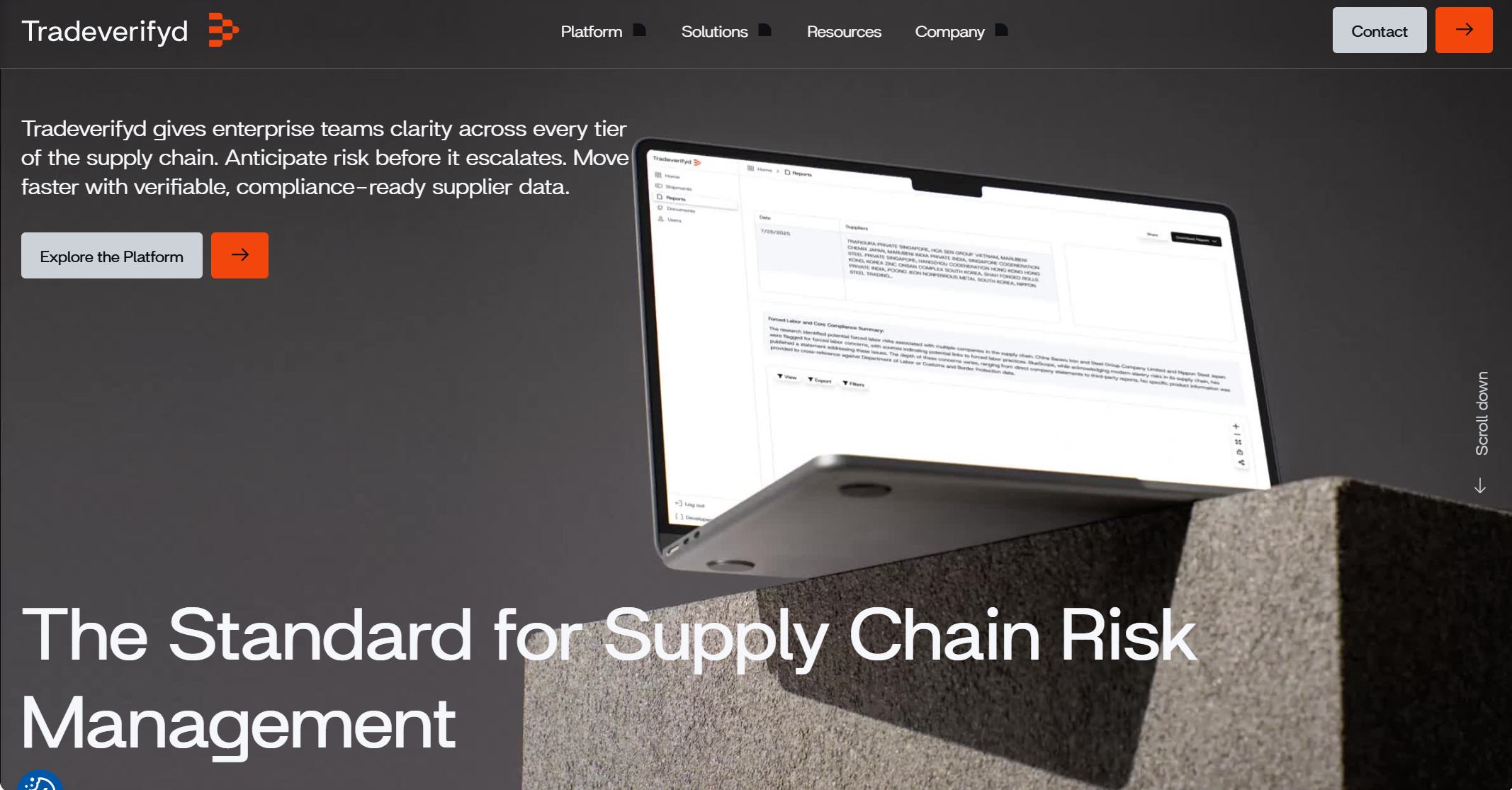
Website: https://tradeverifyd.com/
Tradeverifyd enhances transparency and compliance in your supply chain operations. You can monitor supplier risk in real time, streamline due diligence, and verify documentation to ensure regulatory compliance. The platform automates risk scoring and helps you respond confidently to regulatory inquiries. Tradeverifyd is especially valuable for organizations that need to meet strict regulations, avoid shipment delays, and protect their reputation through proactive risk management.
| Feature | Benefit |
|---|---|
| Real-time supplier risk monitoring | Enables organizations to detect and address potential issues promptly. |
| Efficient due diligence | Streamlines the onboarding process, ensuring compliance from the start. |
| Documentation verification | Confirms the authenticity of supplier claims, crucial for regulatory compliance. |
| Regulatory inquiry response | Empowers organizations to handle compliance checks confidently, reducing risk of penalties. |
| Automated risk scoring | Facilitates proactive risk management and prioritization of supplier assessments. |
9.SAP Integrated Business Planning
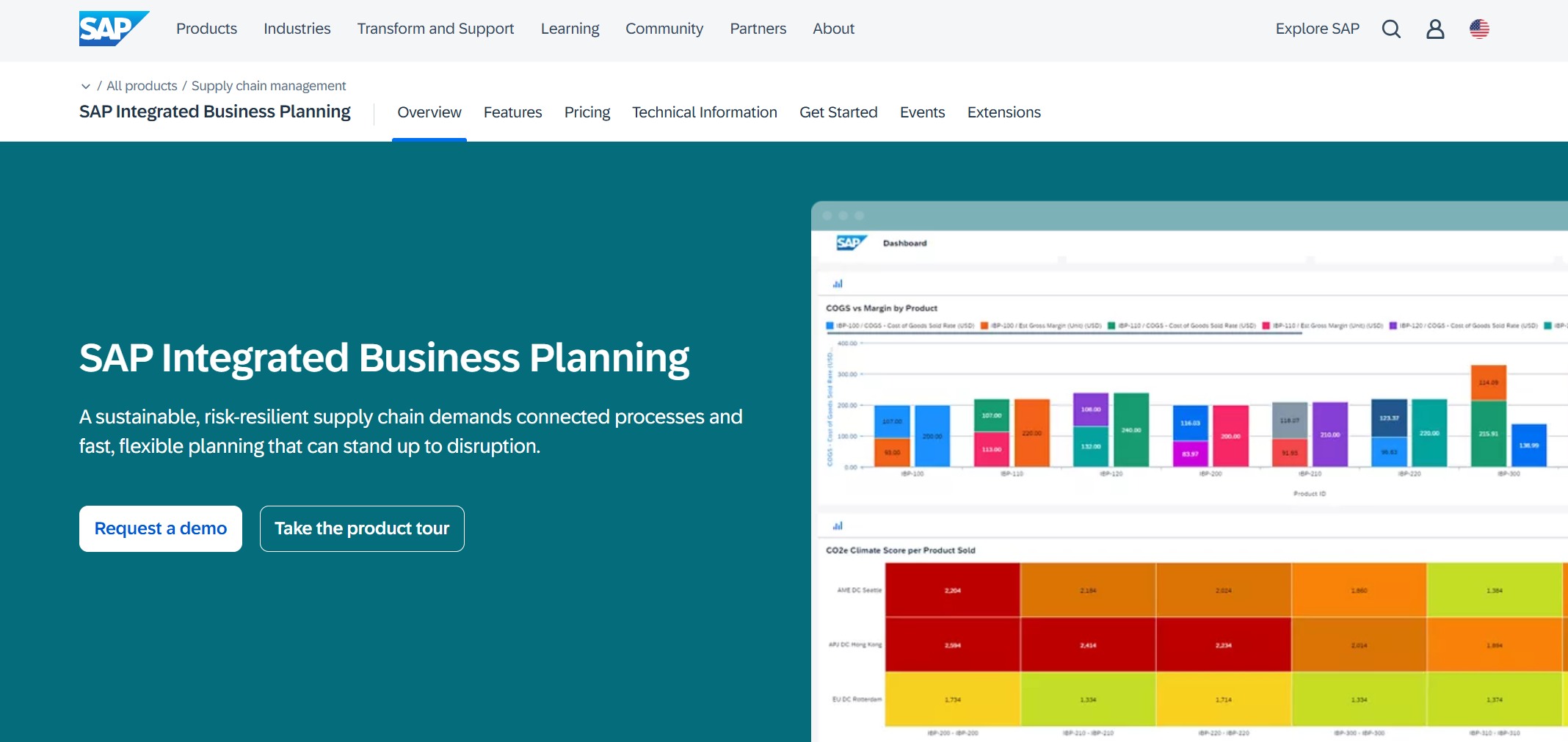
Website: https://www.sap.com/products/scm/integrated-business-planning.html
SAP Integrated Business Planning gives you intelligent visibility across your digital supply chain. The platform visualizes alerts, procedure playbooks, and embedded analytics to help you detect and analyze disruptions. You can manage by exceptions, focusing on the most pressing issues with machine learning-powered custom alerts. SAP Integrated Business Planning enables collaboration across your network, allowing you to consider supplier constraints and act quickly on alerts. This tool is perfect for enterprises that want to standardize processes, document best practices, and improve planning results.
10.Manhattan Active Supply Chain
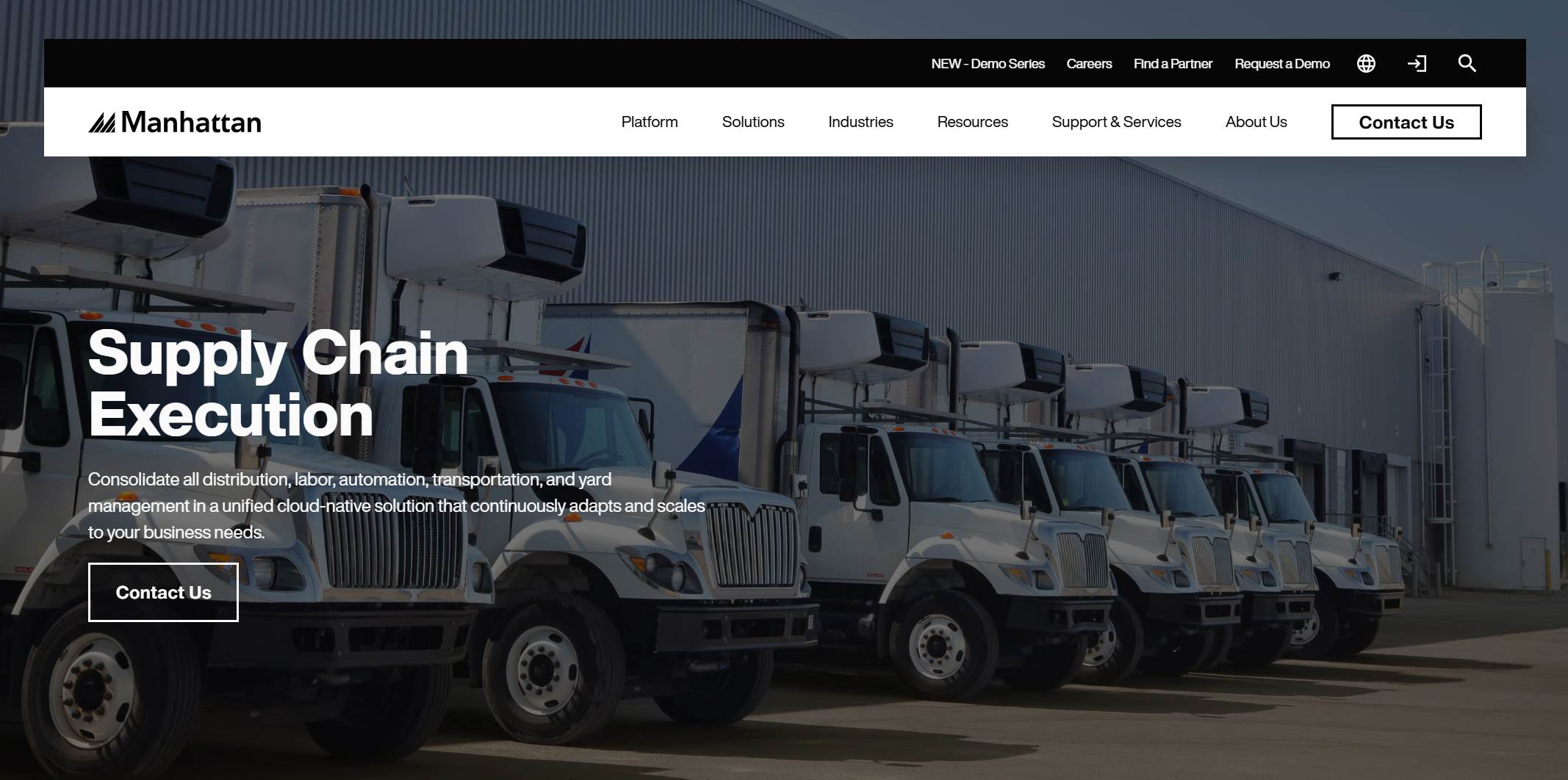
Website: https://www.manh.com/solutions/supply-chain-management-software
Manhattan Active Supply Chain provides end-to-end visibility into your supply chain, from vendors to warehouses to final delivery. You can monitor performance metrics across transportation, warehousing, and forecasting, gaining insights into how demand impacts efficiency. The platform automates and streamlines the flow of goods, helping you enhance operational efficiency and respond to changes quickly. Manhattan Active Supply Chain is suitable for enterprises that need actionable insights and automation to support continuous improvement.
With Manhattan Active Supply Chain, you gain actionable insight from the vendor on the way into the warehouse out the other side and to the final destination.
When you evaluate these supply chain visibility tools, consider your business size, integration needs, and the level of real-time visibility required. Each tool offers unique strengths, so match their features to your operational goals for the best results.
FineReport as a Supply Chain Visibility Tool
Real-Time Data Integration
You can use FineReport to connect data from different systems and sources. This supply chain visibility tool gives you real-time data, so you always know what is happening in your supply chain. You get updates in milliseconds, which helps you track shipments, inventory, and orders without delay. FineReport supports ai supply chain visibility by letting you automate data collection and analysis. You can synchronize information from ERP, CRM, and IoT devices. This means you see changes as they happen and respond quickly to any issues.
Dashboards and Visualization
FineReport helps you build dashboards that show key metrics and trends. You can drag and drop charts, graphs, and tables to create custom views. These dashboards give you real-time visibility into your supply chain. You see sales, inventory, and supplier performance all in one place. The supply chain visibility software lets you drill down into details and spot problems before they grow. You can share dashboards with your team, so everyone stays informed and makes better decisions.
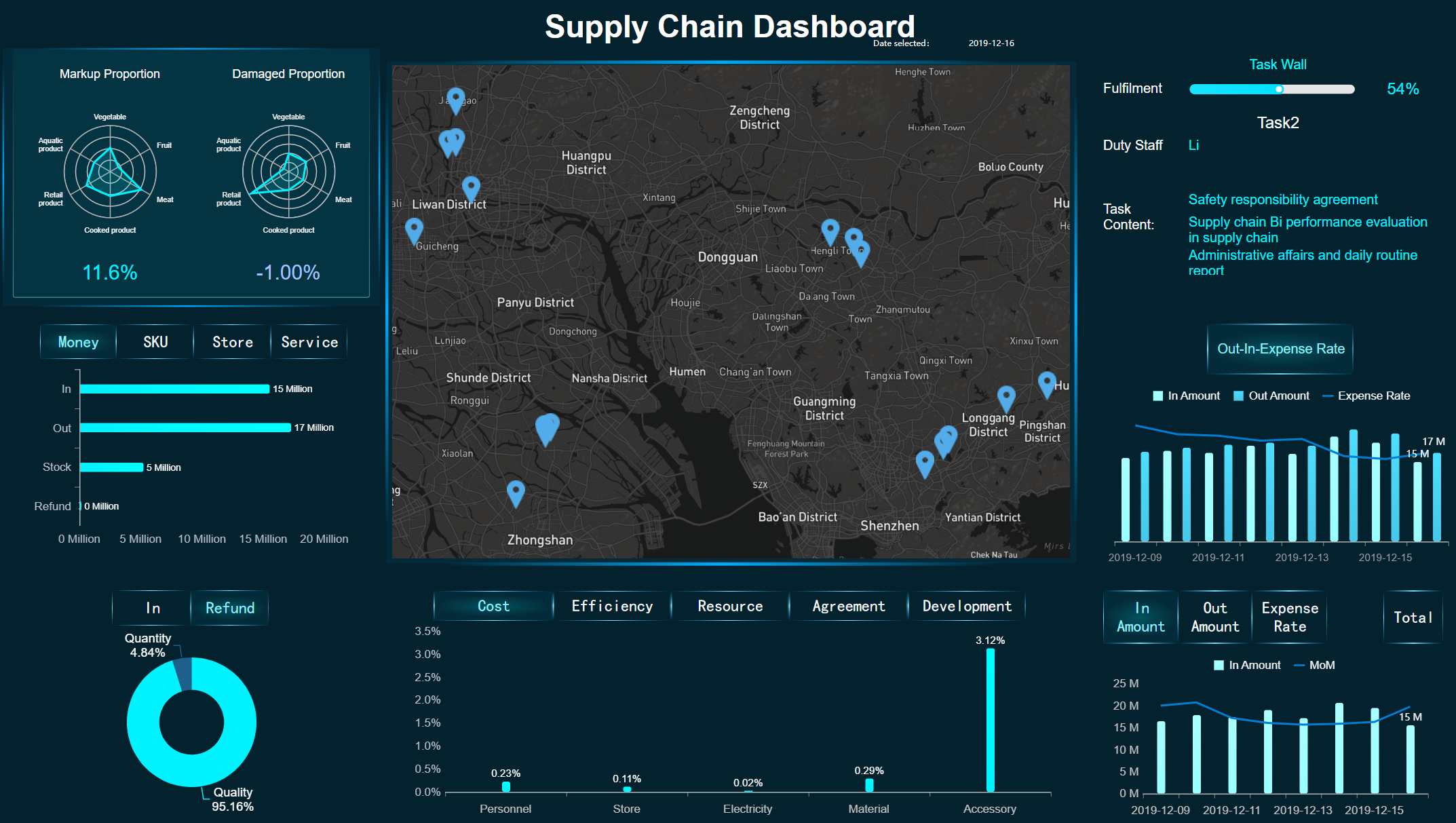
Mobile BI and Control Tower
You can access FineReport on your phone or tablet. This mobile BI feature lets you check reports and dashboards anywhere. You get alerts and updates on the go, which helps you manage your supply chain even when you are not at your desk. The control tower feature gives you end-to-end visibility. You see every step, from procurement to delivery. This helps you track shipments, monitor suppliers, and manage inventory in real time.
Manufacturing Supply Chain Solution
FineReport supports manufacturers with data-driven visibility. You can integrate procurement, inventory, and sales data to optimize your operations. The ai supply chain visibility features help you predict risks and improve efficiency. For example, BOE used FineReport to reduce inventory costs by 5% and boost operational efficiency by 50%. You can use FineReport to build a digital supply chain system that connects all your business units. This makes your supply chain more transparent and agile.
Tip: FineReport’s real-time data integration and mobile BI features help you respond faster to disruptions and keep your supply chain running smoothly.
| Feature | Benefit |
|---|---|
| Real-time data | Instant updates and tracking |
| Dashboards | Visual insights and trends |
| Mobile BI | Access anywhere, anytime |
| Control Tower | End-to-end visibility |
| AI-powered analytics | Predict risks and optimize |
Comparing Supply Chain Visibility Tools

Feature Comparison Table
When you compare supply chain visibility tools, you should focus on the features that matter most for your business. Each tool offers different strengths. Some tools help you analyze data with AI, while others make it easy to connect with your existing systems. The table below shows the most important features to consider:
| Feature | Description |
|---|---|
| AI-Powered Features | Analyze data for cost reduction, predictive maintenance, demand forecasting, and route optimization. |
| Real-Time Tracking Data | Manage shipments effectively and identify bottlenecks proactively. |
| Integration Support | Seamlessly connect with existing CRM, logistics, and ERP systems. |
| Ease of Use | Faster mastery of the tool leads to better implementation success. |
| Automated Alerts and Workflows | Enable immediate responses to supply chain changes. |
| Customization Capabilities | Essential for meeting unique industry requirements. |
| Security Features | Protect sensitive data with comprehensive security policies. |
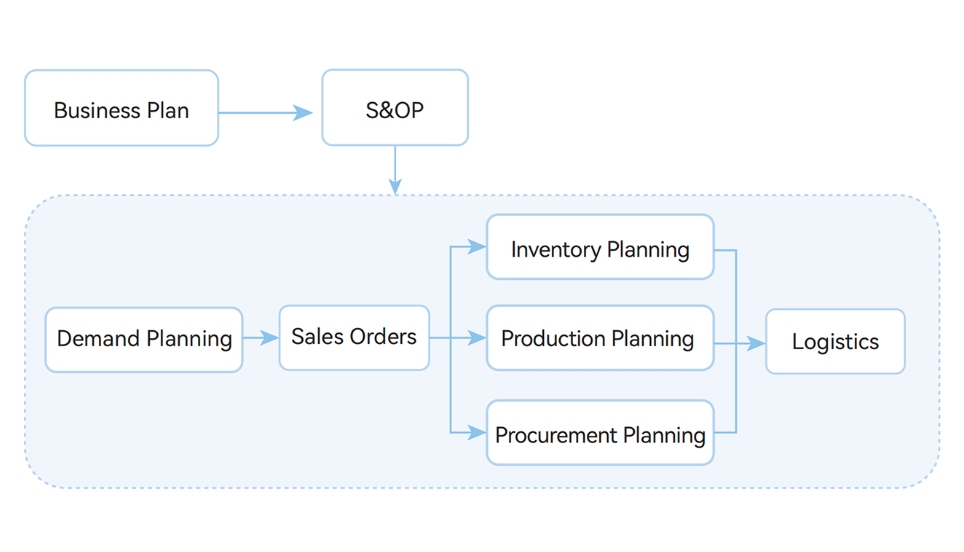
You should look for tools that offer real-time tracking, strong integration support, and easy customization. These features help you respond quickly to changes and keep your supply chain running smoothly.
Tip: Always check if the tool supports your existing software and can scale up as your business grows. This helps you avoid costly upgrades later.
How to Choose the Right Supply Chain Visibility Tool
Evaluation Criteria
You want a supply chain visibility tool that fits your business goals. Start by looking at the most important features. Industry experts recommend checking how well the tool tracks shipments, integrates with your systems, and supports your growth. Use the table below to guide your evaluation:
A strong tool should offer predictive supply chain features, real-time data, and easy integration with your current systems.
Decision Factors
You need to match the tool to your business type. If you run a global operation, choose a platform with broad coverage and strong analytics. For smaller companies, focus on ease of use and quick setup. Look for ai-powered platforms that deliver predictive insights and help you manage risks. Always check if the tool supports your supply chain management needs now and as you grow.
Tip: Ask vendors for case studies that show proven results in your industry.
Mistakes to Avoid
Many businesses make the same mistakes when picking a visibility tool. Avoid these common pitfalls:
- Failing to get end-to-end visibility can lead to poor decisions and delayed shipments.
- Ignoring supplier risk by relying on a single supplier can cause major disruptions.
- Overlooking inventory management can tie up cash or lead to stockouts.
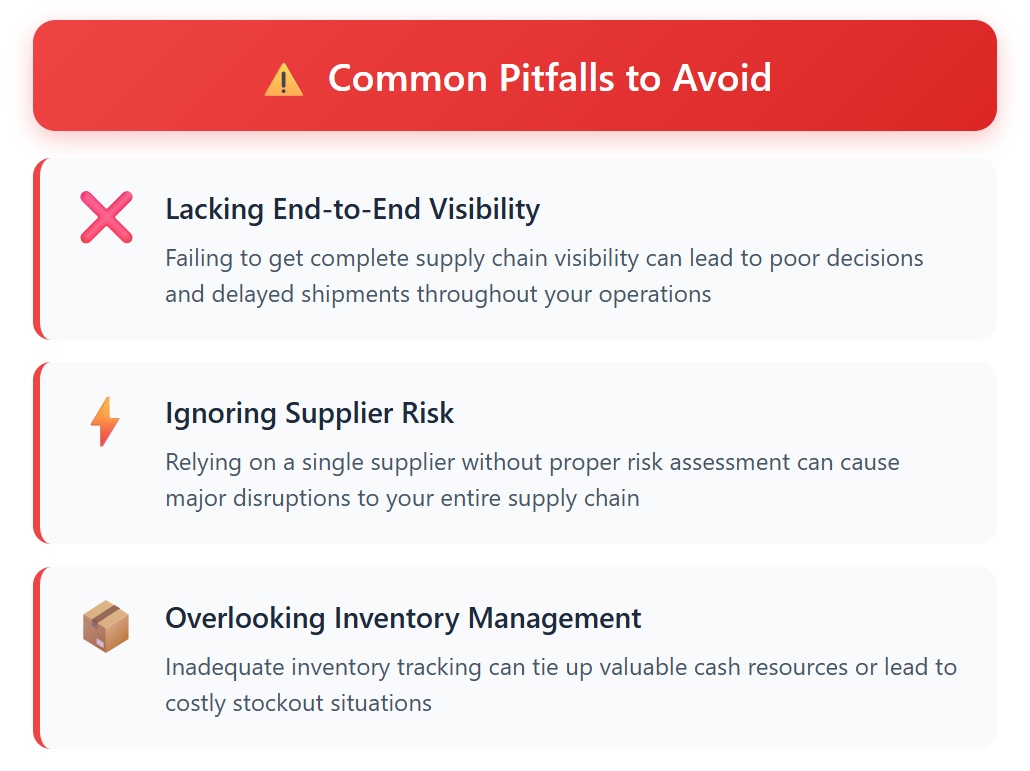
Choose a tool that gives you a clear view of your entire supply chain. This helps you stay agile and respond quickly to changes.
Selecting the right visibility software shapes your supply chain’s future. You need visibility software that delivers real-time insights and end-to-end transparency. Many companies now expect visibility software to support predictive alerts and centralized data. With the right visibility software, you improve agility, reduce costs, and make better decisions.
- Real-time visibility software is essential for managing dynamic supply chains.
- End-to-end transparency from visibility software helps you respond to disruptions.
- Companies using visibility software see better inventory planning and fewer expedited freight costs.
To get started, follow these steps:
- Define your goals for visibility software and set clear KPIs.
- Schedule demos with vendors to see how visibility software fits your needs.
- Consult with providers about integration and support for your visibility software.
- Foster a data-driven culture to maximize the value of your visibility software.
- Explore FineReport by FanRuan-en if you want visibility software tailored for manufacturing supply chain management.
The right visibility software gives you the control and insight you need to thrive in 2025.
When choosing supply chain visibility tools for your business, FineReport stands out with its superior capabilities. It delivers multi-source data integration that replaces outdated T+1 systems—such as legacy Qlik or Oracle solutions with latency up to 24 hours—with real-time updates measured in seconds. This real-time capability helps you stay agile and make informed decisions faster. FineReport could be the perfect partner to elevate your supply chain operations.
Continue Reading About Supply Chain
Supply Chain Optimization Explained For Modern Businesses
Understanding the Six Supply Chain Model Types
What is Supply Chain Automation and How Does It Work
FAQ

The Author
Lewis
Senior Data Analyst at FanRuan
Related Articles

Carbon Emission Management Explained and Why It Matters
Carbon emission management involves tracking and reducing greenhouse gases to meet regulations, cut costs, and protect the environment.
Lewis
Oct 12, 2025

What is Green Manufacturing and Its Key Principles
Green manufacturing uses eco-friendly processes to boost energy efficiency, reduce waste, and promote sustainable materials in production.
Lewis
Oct 10, 2025

What ESG Risk Management Is and Why It Matters For Companies
ESG risk management helps companies identify, assess, and address environmental, social, and governance risks for better performance and compliance.
Lewis
Oct 10, 2025
